X-Men Introduction for Beginners: A Simple Marvel Guide
Category: Marvel
Discover the World of X-Men: A Beginner's Guide
If you're new to Marvel or just curious about the iconic X-Men, you're in the right place. With countless characters, stories, and timelines, the X-Men universe can feel overwhelming, especially for casual fans or newcomers. Maybe you've heard about mutants, Professor X, or Wolverine but don't know where to start or what makes these heroes so special. This post breaks down the essentials in a clear, standalone narrative designed to give you a solid introduction without any confusing jargon or spoilers. Whether you stumbled here searching for "X-Men overview for beginners" or simply want to understand why X-Men have been a fan favorite for decades, we've got you covered. We understand the frustration of diving into complex comic lore or movie series and not knowing the core ideas. Our goal is to guide you step-by-step through who the X-Men are, their backgrounds, main conflicts, and why they matter in the Marvel universe—all in an easy-to-follow way. By the end, you’ll feel confident to explore comics, shows, or movies featuring the X-Men, knowing exactly what sets them apart. Let’s start your journey into the world of mutants, friendships, and epic battles!
- Discover the World of X-Men: A Beginner's Guide
- What Are the X-Men? A Basic Overview of Mutants and Their Powers
- The Origins: How and Why the X-Men Were Formed
- Key Characters You Should Know: Professor X, Wolverine, Cyclops, and More
- The Mutant Metaphor: Understanding the Social and Political Themes
- Common X-Men Villains and Their Motivations
- Popular X-Men Storylines – A Beginner-Friendly Breakdown
- X-Men in Comics vs. Movies: What’s the Difference?
- Why the X-Men Matter in the Larger Marvel Universe
- How to Get Started Reading or Watching X-Men as a New Fan
- Fun Facts & Trivia to Impress Your Friends
What Are the X-Men? A Basic Overview of Mutants and Their Powers
At their core, the X-Men are a team of superheroes in the Marvel Universe, but what truly sets them apart is that they are all mutants—humans born with a unique genetic variation called the X-gene. This gene grants them special abilities or superpowers that can range from subtle enhancements to dramatic, reality-bending skills. The diversity of mutant powers is one of the defining features of the X-Men, making each character distinct and memorable.
What Makes Mutants Unique?
Mutants are often born with their abilities activated or develop them during puberty, representing a natural evolution of humanity. Unlike many superheroes who receive powers through accidents or technology, mutants are part of a new stage in human evolution. Their powers vary widely, but common examples include:
- Telepathy and Telekinesis – The ability to read minds or move objects without physical contact. Professor Charles Xavier, the X-Men’s leader, is a prime example.
- Enhanced Senses and Healing – Characters like Wolverine have heightened senses and regenerative healing abilities that make them nearly unstoppable.
- Energy Manipulation – Some mutants can manipulate forms of energy, such as Cyclops, who emits powerful optic blasts from his eyes.
- Shape-shifting and Invisibility – Powers that allow mutants to alter their appearance or disappear, adding intrigue and versatility to the team.
Why Do the X-Men Matter?
The X-Men aren’t just a superhero team; their stories often explore themes of acceptance, diversity, and discrimination, reflecting real-world social issues. Many mutants face fear and prejudice from society simply because of their powers, which makes the X-Men’s mission about more than fighting villains—it’s about fighting for mutant rights and equality. This deeper narrative is a big reason why the X-Men resonate with fans and newcomers alike.
Understanding the basic concept of mutants and their powers helps you appreciate the unique appeals of the X-Men series, whether in comics, movies, or TV shows. As you dive deeper, you’ll find a rich tapestry of characters each with their own struggles and strengths, all united under the banner of mutantkind.
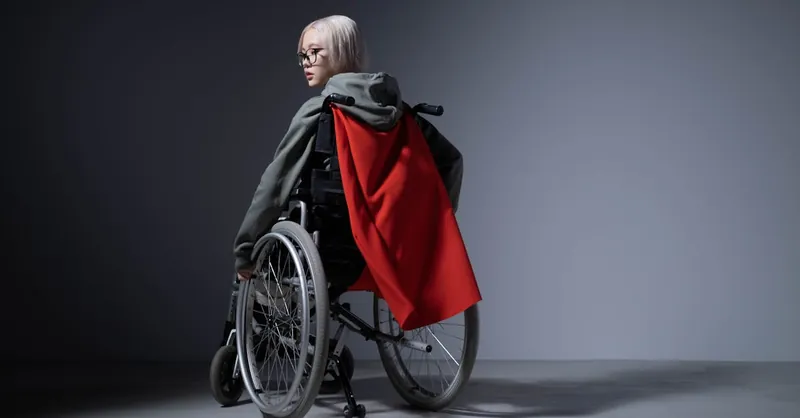
Image courtesy of cottonbro studio
The Origins: How and Why the X-Men Were Formed
The X-Men were created to be more than just a team of superheroes—they were founded to protect and unite mutants in a world that often fears and rejects them. The origins of the X-Men trace back to Professor Charles Xavier, a powerful mutant with telepathic abilities and a visionary belief in peaceful coexistence between mutants and humans. Seeing the rising tensions and discrimination mutants faced, Xavier established the X-Men as a way to defend mutants from external threats while teaching them to control their powers responsibly.
Xavier’s school, known as the Xavier School for Gifted Youngsters, serves as both a safe haven and training ground for young mutants. Here, students learn to harness their abilities, build teamwork, and prepare for the challenges of a world that often treats them as outcasts. The original X-Men team consisted of mutants with various powers united by a common goal: to protect humanity and mutantkind alike, while striving for a future where both can live in harmony.
Why was the X-Men formation so important?
- To combat prejudice and violence against mutants by offering a positive force for change.
- To prepare mutants to defend themselves from hostile threats, including villainous mutants and anti-mutant groups.
- To symbolize hope and acceptance, showing that differences can be strengths rather than reasons for fear.
This founding philosophy not only grounds the X-Men stories in powerful social themes but also makes their adventures deeply relatable, emphasizing personal growth, community, and the ongoing fight for equality. Understanding these origins is key to appreciating why the X-Men remain one of Marvel’s most enduring and beloved teams.
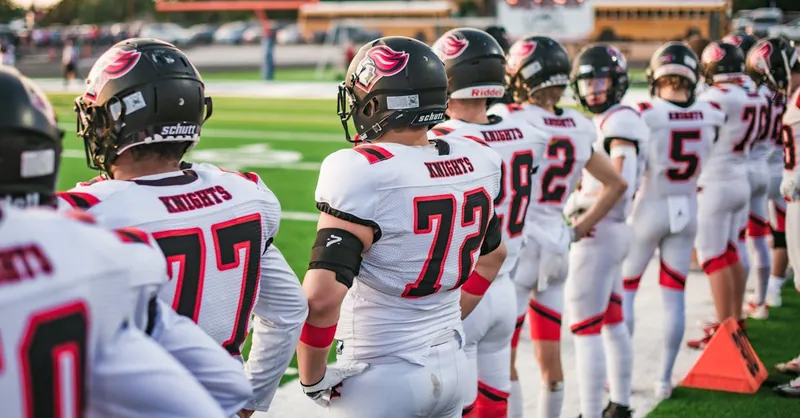
Image courtesy of Tim Mossholder
Key Characters You Should Know: Professor X, Wolverine, Cyclops, and More
To truly understand the X-Men universe, it helps to get familiar with some of its most iconic characters. These mutants aren’t just superheroes—they each represent different aspects of the X-Men’s mission, challenges, and diversity of powers. Here’s a quick introduction to the key figures you'll encounter in X-Men stories:
Professor Charles Xavier (Professor X)
- The founder and leader of the X-Men, Professor X is a powerful telepath who can read and control minds.
- He is a mentor and father figure to many mutants, running the Xavier School for Gifted Youngsters where mutants learn to control their powers and fight for peaceful coexistence with humans.
- Xavier’s vision of equality and harmony drives much of the X-Men’s philosophy.
Wolverine (Logan)
- One of the most popular and enduring X-Men, Wolverine is known for his enhanced healing ability, superhuman senses, and razor-sharp adamantium claws.
- He has a rugged, tough personality and a mysterious past, often serving as the team’s fierce protector and reluctant hero.
- Wolverine’s story explores themes of identity, survival, and redemption.
Cyclops (Scott Summers)
- Recognizable by the unstoppable optic blasts he emits from his eyes, Cyclops is a natural-born leader and strategist within the X-Men.
- Often portrayed as Professor X’s right-hand man, he struggles with balancing his responsibilities as a leader and his personal relationships.
- Cyclops embodies discipline and control, often acting as a foil to more impulsive characters like Wolverine.
More Characters to Know
- Storm (Ororo Munroe): She can control the weather and is one of the team’s most powerful mutants and inspiring leaders.
- Jean Grey: A telepath and telekinetic with immense power, often associated with the legendary Phoenix Force storyline.
- Beast (Hank McCoy): Known for his brilliant mind and blue-furred appearance, Beast combines genius-level intellect with agility and strength.
Each of these characters adds a unique layer to X-Men stories, not just through their powers but through their personal challenges and growth. Getting to know them will help you connect with the X-Men’s deeper themes of friendship, identity, and fighting for acceptance in a world that fears difference. As you explore X-Men comics, films, or shows, you’ll see why these characters have become cultural icons beyond just superhero fandom.
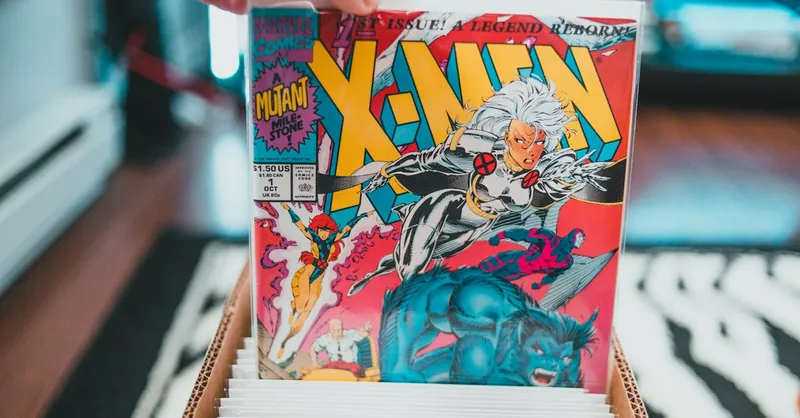
Image courtesy of Erik Mclean
The Mutant Metaphor: Understanding the Social and Political Themes
One of the most compelling reasons the X-Men have remained relevant and beloved for decades is their powerful use of the mutant metaphor to explore real-world social and political issues. In the X-Men universe, mutants are often feared, misunderstood, and discriminated against simply because they are different. This mirrors many historical and ongoing struggles faced by marginalized groups, making the stories resonate beyond just superhero action.
What Does the Mutant Metaphor Represent?
At its core, the mutant metaphor speaks to themes of prejudice, fear, and the fight for acceptance. Mutants symbolize anyone who’s been treated as an outsider—whether due to race, religion, sexuality, disability, or other differences. The X-Men stories don’t just depict good vs. evil; they delve into complex debates about:
- Civil Rights and Equality – The mutants’ struggle often parallels movements for racial equality and social justice, highlighting the importance of fighting discrimination and advocating for equal rights.
- Fear of the Unknown – Society’s fear and suspicion of mutants reflect broader anxieties about change and diversity, showing how misunderstanding can lead to conflict.
- Identity and Self-Acceptance – Many mutants wrestle with their powers and place in the world, reflecting universal themes of growing up, self-discovery, and embracing one’s uniqueness.
- Peace vs. Militancy – The differing approaches of characters like Professor X (peaceful coexistence) and Magneto (more radical, defensive tactics) symbolize debates within social movements about how best to achieve justice.
Why Are These Themes Important for Newcomers?
Understanding these social and political undercurrents adds a rich layer to the X-Men stories beyond their action-packed plots and superhero battles. It explains why the comics, films, and TV shows often tackle sensitive, real-world issues in a way that few other superhero franchises do. The mutant metaphor makes the X-Men not just exciting characters but also meaningful symbols of hope, resilience, and change for fans of all backgrounds.
By recognizing the social themes woven into the mutant narrative, newcomers gain a deeper appreciation of why the X-Men remain a powerful and relevant part of Marvel’s storytelling universe—even decades after their creation.
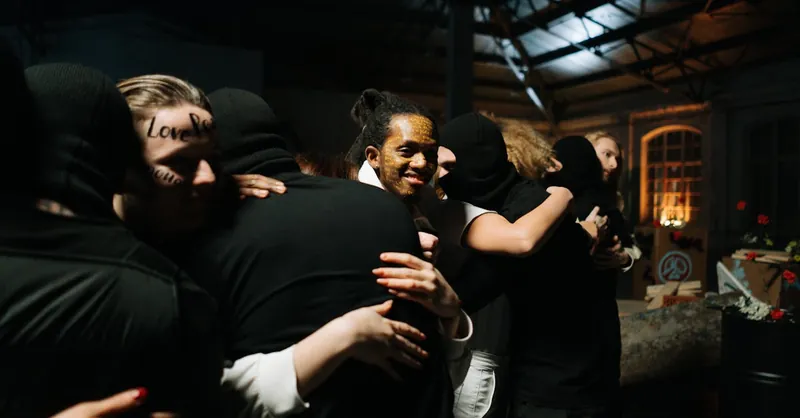
Image courtesy of cottonbro studio
Common X-Men Villains and Their Motivations
Every great superhero story needs compelling villains, and the X-Men universe boasts some of Marvel’s most complex and memorable antagonists. These villains aren’t just obstacles to be defeated; their motivations often reflect deep philosophical conflicts that challenge the X-Men’s ideals and highlight the series’ core themes of prejudice, power, and survival.
Magneto: The Mutant Supremacist
- Magneto (Erik Lehnsherr) is perhaps the X-Men’s most iconic villain and sometimes anti-hero. A powerful mutant with the ability to control magnetic fields, Magneto’s backstory as a Holocaust survivor deeply influences his worldview.
- He believes that mutants are the next step in evolution and should dominate humans to prevent mutant extinction. His aggressive stance on mutant superiority puts him at odds with Professor X’s vision of peaceful coexistence.
- Magneto’s motivations are rooted in protectionism, survival, and justice—though his methods are often ruthless, which makes him a sympathetic yet dangerous antagonist.
Mystique: The Master of Disguise
- Mystique (Raven Darkhölme) is a shapeshifting mutant who can alter her appearance at will. Her motivations vary depending on the story but often revolve around mutant freedom and survival.
- She embodies adaptability and stealth, frequently acting as a spy, saboteur, or leader for mutant causes that challenge human authority. Mystique’s character highlights the theme of identity and the complexities of mutant activism.
Sentinels: The Anti-Mutant Machines
- Unlike mutant villains who have personal motivations, the Sentinels represent society’s fear of mutants. These giant, robotic hunters are designed specifically to detect and eliminate mutants.
- Sentinels symbolize institutionalized fear, control, and oppression, reflecting real-world themes of surveillance and persecution. Their presence constantly threatens mutant existence and forces the X-Men to engage in high-stakes defense of their community.
Sabretooth and Other Fierce Enemies
- Sabretooth (Victor Creed) is Wolverine’s brutal nemesis, featuring savage strength, enhanced senses, and rapid healing. His motivations are often tied to violence and chaos, representing the more primal and dangerous aspects of mutant powers.
- Other recurring villains like the Hellfire Club, a secretive organization with mutant and human members pursuing power for personal gain, add layers of political intrigue and moral ambiguity to the X-Men stories.
Why Understanding Villains Matters for Newcomers
Acknowledging these villains and their motivations helps newcomers grasp the complex conflicts within the X-Men universe. The battles are never just physical fights but represent clashing ideologies about coexistence, survival, and what it means to be “different.” As you explore X-Men stories, recognizing these villains will deepen your understanding of the stakes involved and the choices the heroes face, making your experience richer and more engaging.
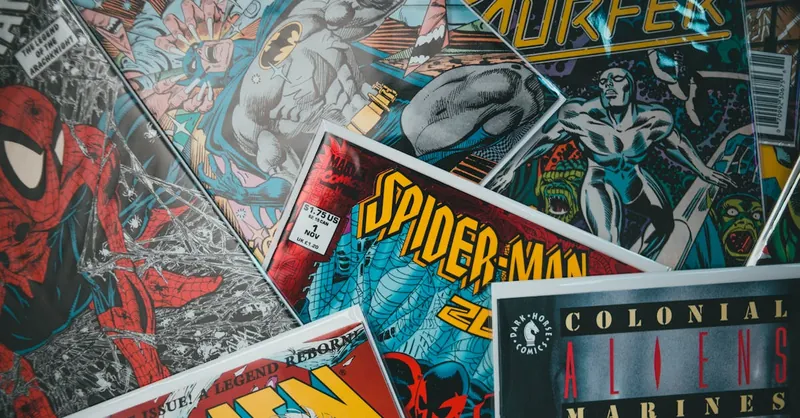
Image courtesy of Erik Mclean
Popular X-Men Storylines – A Beginner-Friendly Breakdown
Diving into the X-Men universe can feel intimidating because of its vast number of comics and story arcs, but certain key storylines have defined the team and shaped mutant lore for decades. These popular X-Men stories are great starting points for newcomers because they showcase the essential themes, characters, and conflicts that make the X-Men so compelling.
1. The Dark Phoenix Saga
One of the most iconic X-Men story arcs, The Dark Phoenix Saga follows Jean Grey as she taps into the immense, cosmic power of the Phoenix Force. What begins as an empowering transformation quickly turns into a dangerous loss of control, forcing the X-Men to confront difficult questions about power, identity, and sacrifice. This storyline highlights the risks of power without restraint and remains a defining moment for Jean Grey and the team.
2. Days of Future Past
This tale explores a dystopian future where mutants are hunted to near extinction by Sentinels, the deadly mutant-fighting robots. To prevent this grim future, Wolverine’s consciousness is sent back in time to stop a key event that triggers the crisis. Days of Future Past mixes action with high stakes and addresses themes of destiny, sacrifice, and the consequences of hatred—perfect for understanding mutant persecution.
3. God Loves, Man Kills
Widely regarded as one of the most powerful X-Men graphic novels, this story centers on a charismatic preacher who incites anti-mutant hatred, leading to violent consequences. The X-Men confront real-world themes of religious intolerance, bigotry, and fear of the other, making it not just a superhero story but a social commentary that resonates with readers of all backgrounds.
4. X-Men: Age of Apocalypse
In a dramatic alternate reality, the villain Apocalypse takes over the world, forcing mutants to unite in unexpected ways. This storyline explores “what if?” scenarios and showcases how the X-Men adapt when everything they know changes. It’s a gripping saga full of intense battles, complex characters, and bold reinventions, demonstrating the resilience and adaptability of mutantkind.
Why Start With These Stories?
Each of these storylines introduces essential elements of the X-Men mythos:
- Complex characters struggling with identity, loyalty, and power.
- Conflict between mutants and humans, often reflecting real-world social issues.
- High-stakes battles that mix emotional depth with thrilling action.
Beginning your X-Men journey with these arcs provides a strong foundation to appreciate later comics, TV shows, and movies. They capture the spirit of the X-Men—a team fighting not just for survival but for acceptance and hope in a world that fears difference.

Image courtesy of Helena Lopes
X-Men in Comics vs. Movies: What’s the Difference?
If you’re coming to the X-Men universe through the popular movies, you might notice some differences compared to the original comic book stories. Both formats share the core concept of mutants fighting for acceptance, but their approaches to characters, plotlines, and themes can vary widely. Understanding these differences helps newcomers appreciate each medium on its own terms and decide where to dive in first.
Storytelling and Continuity
In the comics, the X-Men’s narrative spans decades, with numerous writers contributing to an ever-expanding universe. This results in complex story arcs, detailed character backstories, and alternate realities—making the comics rich and layered but sometimes daunting for new readers. Famous comic storylines like The Dark Phoenix Saga or Days of Future Past explore themes and events more deeply than their movie adaptations can.
On the other hand, the movies condense and adapt these stories for a wider audience, focusing on streamlined plots with a balance of action and emotional drama. While they stay true to the core themes of mutant prejudice and heroism, films often merge or simplify characters and events to fit into a limited runtime. For example:
- Some characters receive combined or altered origin stories.
- Timelines and relationships are adjusted for dramatic effect.
- Key comic events are adapted with notable changes to suit modern audiences.
Character Portrayal and Development
In comics, characters have room to evolve over many issues, showing growth, setbacks, and shifting allegiances. The filmmakers often had to pick defining traits for characters upfront, making portrayals more focused and, at times, less nuanced due to time constraints. For instance:
- Wolverine remains a fan favorite in both mediums but shows even more layers and history across comic runs.
- Cyclops’s leadership struggles are explored more thoroughly in comics, while movies sometimes highlight his personal conflicts more dramatically.
- Magneto’s complex motivations are consistently portrayed but see different emphases depending on the movie or comic storyline.
Themes and Tone
While both comics and movies tackle big social issues like discrimination and acceptance, the comics often delve deeper into philosophical questions and political allegories linked to real-world civil rights. The movies tend to balance these heavier themes with blockbuster action and character-driven moments, making them more accessible to casual viewers.
So, Which Should You Start With?
- If you want detailed storytelling, extensive character development, and rich social metaphors, the comics are a treasure trove.
- If you prefer visually stunning adaptations, faster pacing, and iconic performances by actors like Hugh Jackman (Wolverine), then the movies offer a thrilling entry point.
Both comics and movies have their unique strengths and together give a fuller picture of the X-Men’s enduring appeal. As you grow more comfortable with the universe, exploring both formats will deepen your understanding of why the X-Men remain a cornerstone of Marvel’s storytelling legacy.
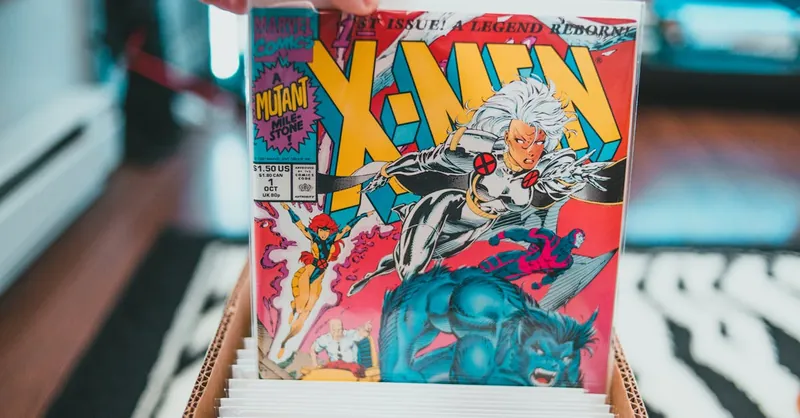
Image courtesy of Erik Mclean
Why the X-Men Matter in the Larger Marvel Universe
The X-Men hold a unique and vital place within the broader Marvel Universe, not just as superheroes but as powerful symbols of diversity, conflict, and hope. Unlike many Marvel heroes whose origins center around personal tragedy or cosmic forces, the X-Men represent an entire community facing systemic prejudice and societal fear due to their mutant nature. This shared experience of being different—and often unwelcome—adds layers of emotional depth and complexity to their stories, setting them apart from other Marvel teams.
Connecting Themes Across Marvel Stories
-
A Lens on Social Issues: The X-Men’s emphasis on themes like discrimination, civil rights, and acceptance resonate across Marvel’s narrative landscape, influencing how other characters and teams address issues of identity and justice. Their stories often intersect with major Marvel events, showcasing how mutant rights impact wider superhero and human communities alike.
-
Interconnected Heroes and Worlds: X-Men characters frequently crossover with classic Marvel figures like the Avengers, Fantastic Four, and Spider-Man, weaving mutant struggles into larger Marvel storylines. These crossovers enrich the universe by showing how conflicts like mutant persecution ripple through the superhero world, often forcing uneasy alliances and complex moral decisions.
-
Expanding Marvel’s Diversity: By focusing on mutants with diverse backgrounds, abilities, and philosophies, the X-Men broaden the Marvel Universe’s representation of different cultures, genders, and perspectives. This diversity challenges traditional superhero tropes and invites fans to explore stories that reflect real-world complexity.
-
Catalysts for Major Events: Many Marvel-wide story arcs—such as House of M or Avengers vs. X-Men—center around mutants, highlighting their influence on the overall balance of power in the Marvel Universe. The X-Men’s role in these events confirms their importance beyond their own titles, impacting the fate of all heroes and humans.
Understanding why the X-Men matter in the larger Marvel Universe helps newcomers appreciate the team’s lasting appeal and relevance. They are not just a battle-ready mutant squad; they are a cornerstone of Marvel’s storytelling, representing the ongoing fight for identity, acceptance, and coexistence in a complex world. This makes the X-Men essential reading for anyone interested in the full scope of Marvel’s heroic legacy.

Image courtesy of Antonius Ferret
How to Get Started Reading or Watching X-Men as a New Fan
Jumping into the X-Men universe for the first time can feel like stepping into a vast, complex world. With decades of comics, numerous movies, and multiple animated series, knowing where to start is key to enjoying the rich mutant saga without feeling overwhelmed. As a new fan, here’s a straightforward guide to help you begin your X-Men journey through the most accessible and engaging entry points.
Start with the Essential Comics or Graphic Novels
If you prefer reading, begin with beginner-friendly graphic novels that capture the core themes and characters of the X-Men without requiring deep knowledge of the entire comic history. Some excellent starting points include:
- "X-Men: God Loves, Man Kills" – A powerful and standalone graphic novel that explores mutant prejudice and social issues, ideal for understanding the X-Men’s emotional depth.
- "The Dark Phoenix Saga" – Classic storyline focusing on Jean Grey, combining thrilling action with profound character development.
- "X-Men: Days of Future Past" (original comic storyline) – Offers a gripping time-travel plot central to mutant survival and justice.
Reading these arcs gives you foundational knowledge of key characters, conflicts, and major themes, allowing you to appreciate the broader mutant mythology.
Watch the X-Men Movies and Animated Series
For fans who prefer visual storytelling, the X-Men movie franchise is a popular and accessible way to experience the mutant saga. Key recommendations include:
- Start with "X-Men" (2000 film) – The first in the movie series introduces core team members and mutant discrimination themes.
- Follow with "X2: X-Men United" and "X-Men: First Class" – These deepen character backstories and explore mutant origins.
- Explore animated series like "X-Men: The Animated Series" (1990s) – A beloved show that adapts many comic storylines in an easy-to-follow format.
Movies and shows simplify some comic complexities, making them great for newcomers wanting entertaining and emotional mutant stories.
Tips for Navigating the X-Men Universe
- Focus on main characters and storylines before diving into spin-offs or alternate realities. Familiarity with Professor X, Wolverine, Cyclops, and Magneto will enrich your experience.
- Don’t worry about reading everything chronologically; X-Men stories often reboot or explore alternate timelines, allowing flexible entry points.
- Use companion guides or summaries (like this blog!) to clarify confusing plotlines or character relationships as you go.
By choosing a starting point that matches your preferred medium and pacing yourself with foundational stories, you can enjoy the X-Men experience fully without feeling lost. Whether you start turning the pages of classic comics or hit “play” on acclaimed movies, the mutant journey you embark on will be rewarding and eye-opening.
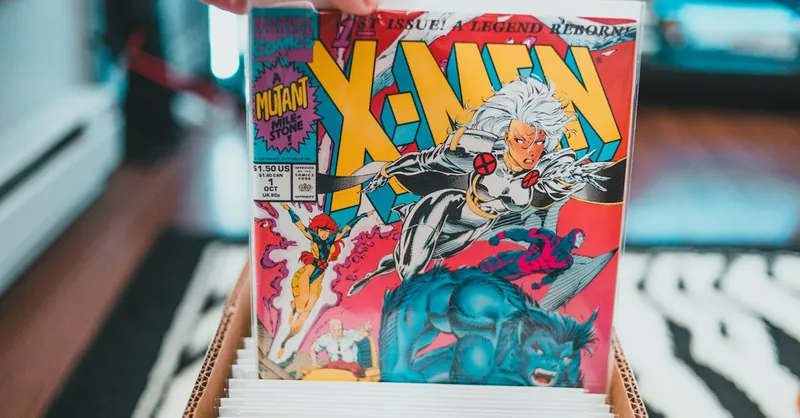
Image courtesy of Erik Mclean
Fun Facts & Trivia to Impress Your Friends
Want to sound like a true X-Men insider at your next Marvel chat or trivia night? Here are some fun facts and surprising trivia about the X-Men universe that will make you stand out! These nuggets not only highlight the creativity behind the mutants but also show how the X-Men have influenced pop culture far beyond comics and movies.
-
Wolverine’s Original Costume Was Yellow and Blue – While Wolverine is famous for his rugged look, his classic comic book costume features bright yellow and blue colors with the iconic black stripes. This vibrant design contrasts with his darker, grittier movie appearance, symbolizing how characters evolve across mediums.
-
Professor X and Magneto Were Inspired by Real-Life Figures – The rivalry and contrasting philosophies between Professor Charles Xavier and Magneto mirror the real-world dynamics between civil rights leader Martin Luther King Jr. and Malcolm X. This layer of social allegory gives their conflicts a profound emotional and ideological depth.
-
The X-Gene Concept Preceded Many Other Mutant Stories – The idea that mutants carry a special “X-gene” marking them as the next stage of evolution has become so influential that it shaped many later mutant and superpower origin stories in comics and pop culture.
-
Storm Was One of Marvel’s First Black Superheroes to Lead a Team – Ororo Munroe, aka Storm, broke new ground as one of the first African-descended superheroes to lead a major Marvel team. Her leadership as the X-Men’s captain helped diversify superhero narratives and inspire generations of fans.
-
Sentinels Actually Started Small – The futuristic, giant robots known as Sentinels began as small prototypes designed to track and capture mutants before evolving into the towering villains seen in comics and movies.
-
X-Men Characters Have Influenced Music and Fashion – From pop stars referencing Wolverine and Storm, to runway collections inspired by mutant aesthetics, the X-Men’s cultural impact extends well beyond page and screen.
-
The “Mutant Registration Act” Has Real-World Parallels – Many X-Men stories revolve around laws requiring mutant registration, echoing real debates about privacy, identity, and government oversight—showing how comics can engage with pressing societal issues.
Knowing these fun facts not only boosts your Marvel knowledge but also enriches your appreciation of why the X-Men are beloved worldwide. Whether you want to impress fellow fans or simply enjoy mutant lore on a deeper level, these trivia gems reveal just how innovative and meaningful the X-Men universe truly is.
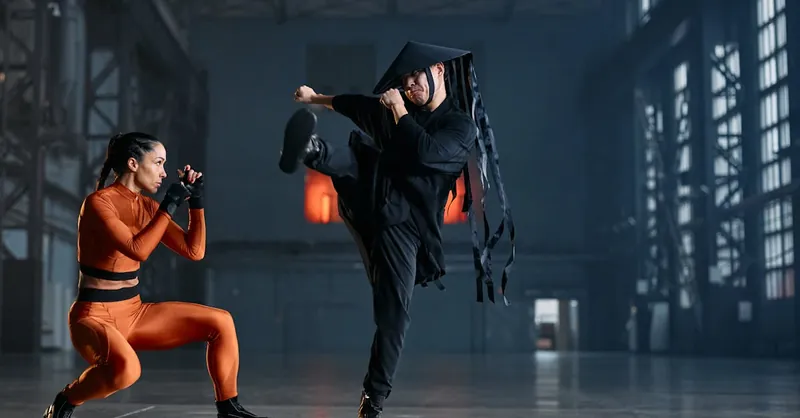
Image courtesy of cottonbro studio
